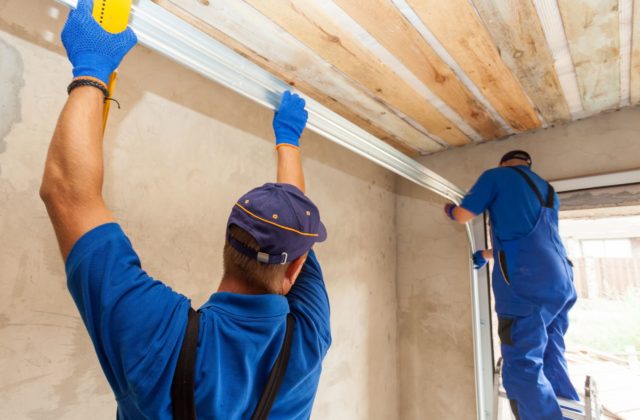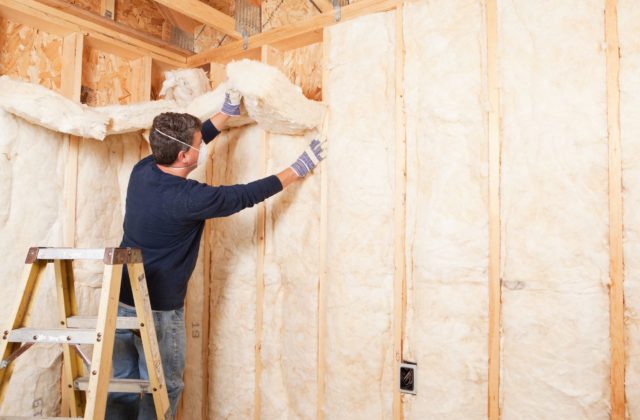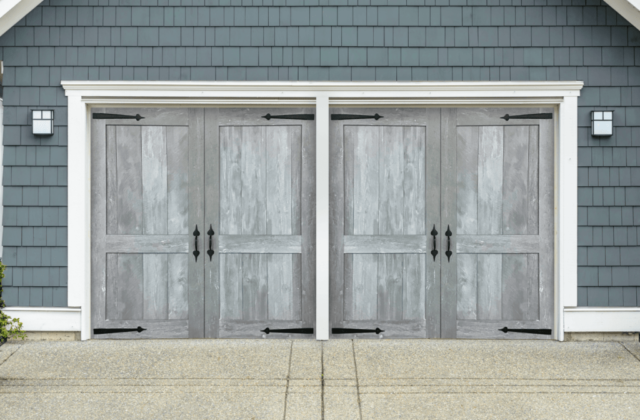Your garage door is a huge entry point into your home and when it’s not working properly, it can cause a domino effect of issues. So, when your garage door won’t close or open properly, it’s time to take action.
But, why won’t your garage door work smoothly? With many working parts of a door, it can be hard to determine the cause. We’ve outlined some of the most common reasons your garage door won’t close or open, and if you’ll need a professional to get the job done.
What Repairs Should You Leave to a Professional?
Before we get into the reasons your garage door won’t close or open properly, it’s best to establish when it’s time to call a professional. Depending on your comfort level, you may be able to do some repairs on your own.
However, for larger replacement scenarios, relying on a professional can help reduce the risk of more issues down the road. Throughout this blog, we identify some projects that you’ll be able to perform yourself and others that we’d recommend a professional for.
Balancing Your Garage Door
In a majority of cases, your garage door won’t close properly if it’s unbalanced. As a general maintenance check, you can balance your garage door with proper instructions. To do this, you’ll detach your door from the opener so it can only be opened or closed manually.
A balanced garage door should stay steady and level and not fall when it’s partially opened. Before the test, mark a small point that’s halfway down your garage door. If you find that your door is slowly closing or becoming unlevel, that indicates that it’s unbalanced and something needs to be checked and repaired.
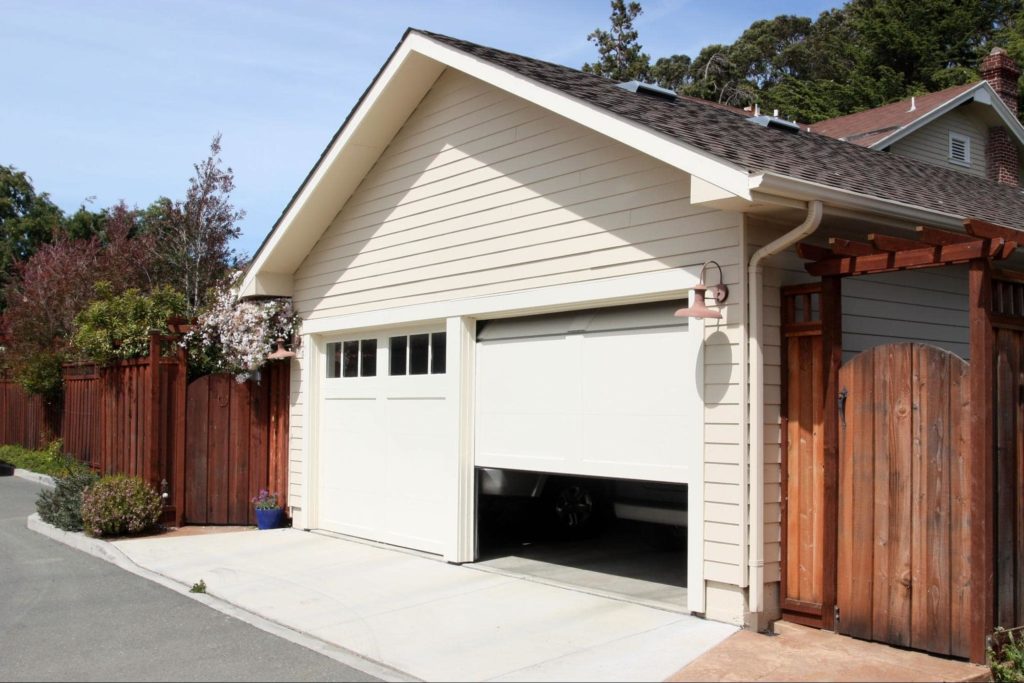
Reasons Your Garage Door Won’t Close Smoothly
Once you’ve balanced your door and determined there’s a bigger issue at play, it’s time to consider the different areas that may be causing the problem. Below, we’ll highlight some common repairs that can help get your garage door back to normal.
#1. There’s Something Blocking the Sensor
Safety sensors are incorporated into your garage door so it doesn’t close on a person or object. This means, that if anything is block the sensor’s path, it won’t be able to fully close your door. Checking your sensors is a quick fix and just requires some cleaning.
Typically, there’s one red light and one green light on each of the sensors that will help you indicate whether the two sensors are connecting with each other and working properly. If you aren’t seeing these lights, there are a few ways to troubleshoot your sensors to see if that fixes the problem.
#2. A Piece of Your Garage Door Needs Repairing
With a lot of moving parts on your garage door, it can be hard to determine what exactly is causing the problem. More often than not, a parts repair may be the reason your garage door won’t close or open properly.
Below, we’ll highlight some of the common garage door parts that are associated with this issue.
Check Your Garage Door Springs
If you’re noticing your garage door lifts a little and then stops, it may be from faulty springs. Repairing your springs can be done by a professional or yourself, depending on your comfort level and repair experience.
There are two different types of springs that may be causing problems.
- Extension springs. By using resistance, the extension springs will stretch when the door is closed and go back to their original position to open the door. With proper maintenance, these springs should last up to 10,000 cycles.
- Torsion springs. These springs are located on the wall, parallel position to your garage door. They will tighten when the door is closed and then unwind as the door opens. Compared to extension springs, torsion springs have a longer lifespan, up to 20,000 cycles.
The first step in replacing any spring is to figure out the size you need. There’s a simple formula to help you determine this. The height of your door divided by half.
You’ll then need to find an approximate weight. If you’re doing this project by yourself, grab a scale and place it underneath the door. Slowly close the door on the scale and calculate the weight.
The replacement steps are relatively simple and this will hopefully solve the problem of your garage door lifting a little and then stopping. And, if you decide to do this project yourself, you’ll save money on labor and only need to pay for the product.
Inspect the Cables and Chains
The purpose of cables is to help the door open and close smoothly. So, when your cables aren’t working properly, it’s likely that your garage door won’t open or will become unbalanced. Cables can become frayed and without proper maintenance, your door will go off the track.
If the cables are the issue, we’d recommend calling a professional to reduce the risk of further damage. Typically, new cables will cost anywhere between $100 and $400 to repair, which includes the labor.
On the other hand, the problem may be loose chains on your garage door. Some indicators that your garage door chains are loose can include
- Your door is really noisy when it’s opening or closing
- Your garage door can only be opened manually
- You’re noticing an increased cost in monthly energy bills
This repair can be done yourself, as long as you’re comfortable with the task. To repair any loose chains, you’ll want to close the garage door, turn off the power, and pull your emergency release rope.
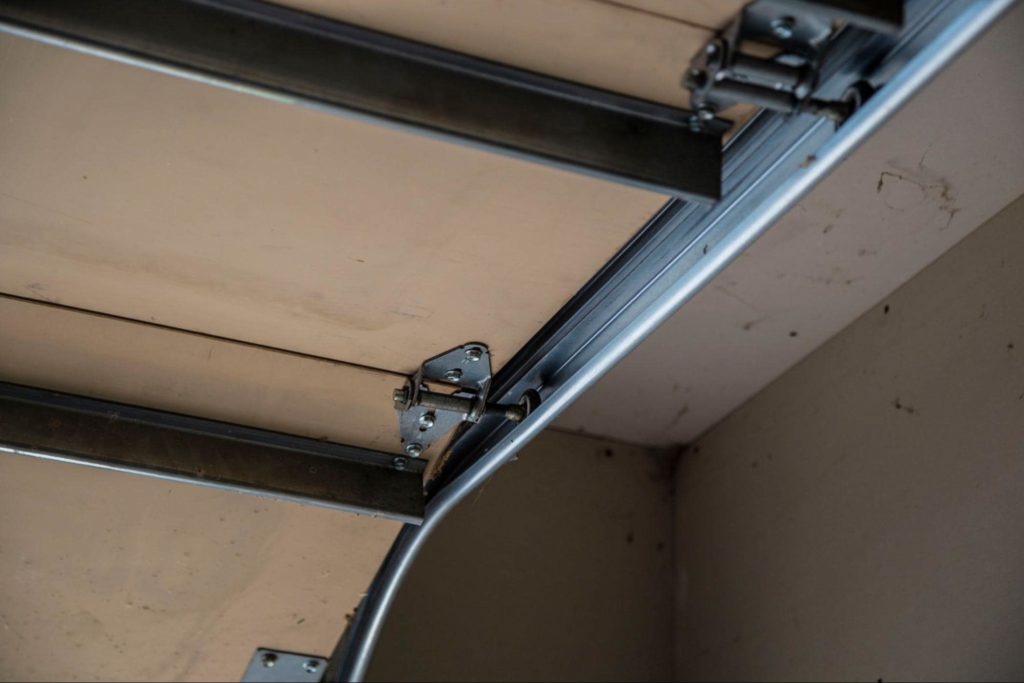
#3. Your Garage Door Needs to be Lubricated
If your garage door won’t close in the cold, it’s possible that the tracks need to be lubricated. When it gets cold outside, the metal starts to tighten and contract, making the track movement stiff. For this type of maintenance, you are able to do this on your own.
Manually close your garage door and turn off any power. Then, take some time to clean off the tracks with a wet rag. When it’s time to apply the lubricant, you’ll want to reopen it. It’s important you don’t put any lubricant on your garage door tracks but rather on the hinges.
To ensure there isn’t a bigger problem down the road, choose the appropriate lubricant. You should choose between silicone sprays or white lithium grease.
Why An Open Garage Door Should Be Addressed Immediately
There are two very distinct reasons why you’ll want to take action right away when your garage door isn’t opening or closing properly. This is a large opening into your home and a malfunctioning door welcomes unwanted guests.
Security
It’s a frightening statistic that 65% of burglarers know their target and have possibly met them before. So be cautious telling people about your malfunctioning garage door. If your garage sensor or opener isn’t working properly, it’s essential that you know how to close your garage door manually so it’s never left unattended and open for an extended period of time.
An unfixed, faulty garage door leaves an opportunity for others to recognize the fact something isn’t right. An open garage door also lets anyone walking nearby see what’s exactly in your home. They’re able to see any further disadvantage points that can help them break into your home.
Energy Efficiency
This large opening in your home can also be potentially detrimental to your home’s energy efficiency. If it’s left open, even just a crack, you’ll be releasing energy from your home. The comfortable temperatures that you’re used to will be invaded by outdoor winds and weather conditions.
So, although the price that comes with repairing your garage door may be costly, the longer you wait, the more costs will build up. To take it a step further, you can also include more energy-efficient features within your garage door to further save money on monthly bills.

Investing in a New Garage Door
Sometimes, a creaky, old garage door is simply that. It may be time to invest in something new. Replacing your door provides one of the highest returns on investments. When it comes to freshening your home, we’d recommend starting with the exterior.
Instead of thinking about the costs that are associated with replacing your garage door, remember the great return on investment and the opportunity you have to design a garage door that truly fits your home’s aesthetics.
